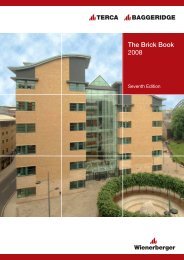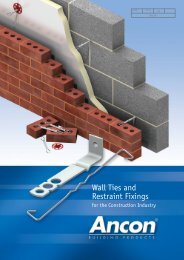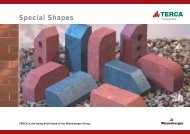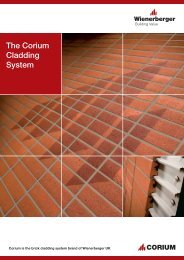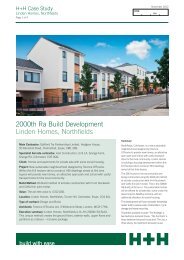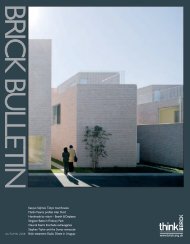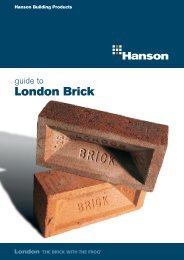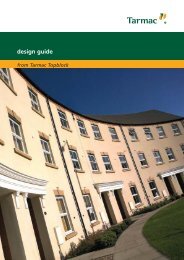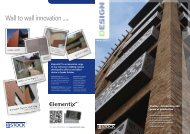The Celcon Thin-Joint System A Definitive Guide - Masonry First
The Celcon Thin-Joint System A Definitive Guide - Masonry First
The Celcon Thin-Joint System A Definitive Guide - Masonry First
You also want an ePaper? Increase the reach of your titles
YUMPU automatically turns print PDFs into web optimized ePapers that Google loves.
Cutting blocks<br />
Cavity insulation<br />
Scaffolding systems<br />
Generally it is not possible to use a conventional<br />
putlog tied scaffold where the inner leaf<br />
blockwork is built ahead of the outer leaf. <strong>The</strong><br />
most versatile and cost effective solution is to use<br />
a proprietary system scaffold to build an<br />
‘independent’ scaffold. <strong>System</strong>s such as Kwikstage<br />
or Cuplok are readily available throughout the UK.<br />
It is also advisable to make sure that the setting<br />
out of the scaffolding takes into account the outer<br />
leaf being built at a later date.<br />
<strong>The</strong>re are a number of ways that <strong>Celcon</strong> blocks can be cut. <strong>The</strong> traditional method is to<br />
use a hand saw. However, depending on the size of the project, builders have found it<br />
more efficient to use mechanical tools such as electric hand saws, circular saws and<br />
band saws, particularly when cutting the larger blocks.<br />
To maximise the productivity advantage of the <strong>Celcon</strong> <strong>Thin</strong>-<strong>Joint</strong><br />
<strong>System</strong> the inner leaf can be built first. In addition to achieving an<br />
immediate weathertight structure, this also allows for easy inspection<br />
of the cavity side of the blockwork and permits the use of partial fill<br />
or full fill insulation. Since the inner leaf blockwork is free of wall<br />
ties and mortar snots, insulation boards can be placed up against the<br />
blockwork with helical type wall ties driven through the insulation<br />
into the blockwork behind. Because the insulation boards are fixed by<br />
mechanical ties, they cannot become loose during construction. Thus<br />
the risk of rain penetration is significantly reduced.<br />
Design <strong>Guide</strong>lines 4<br />
13



